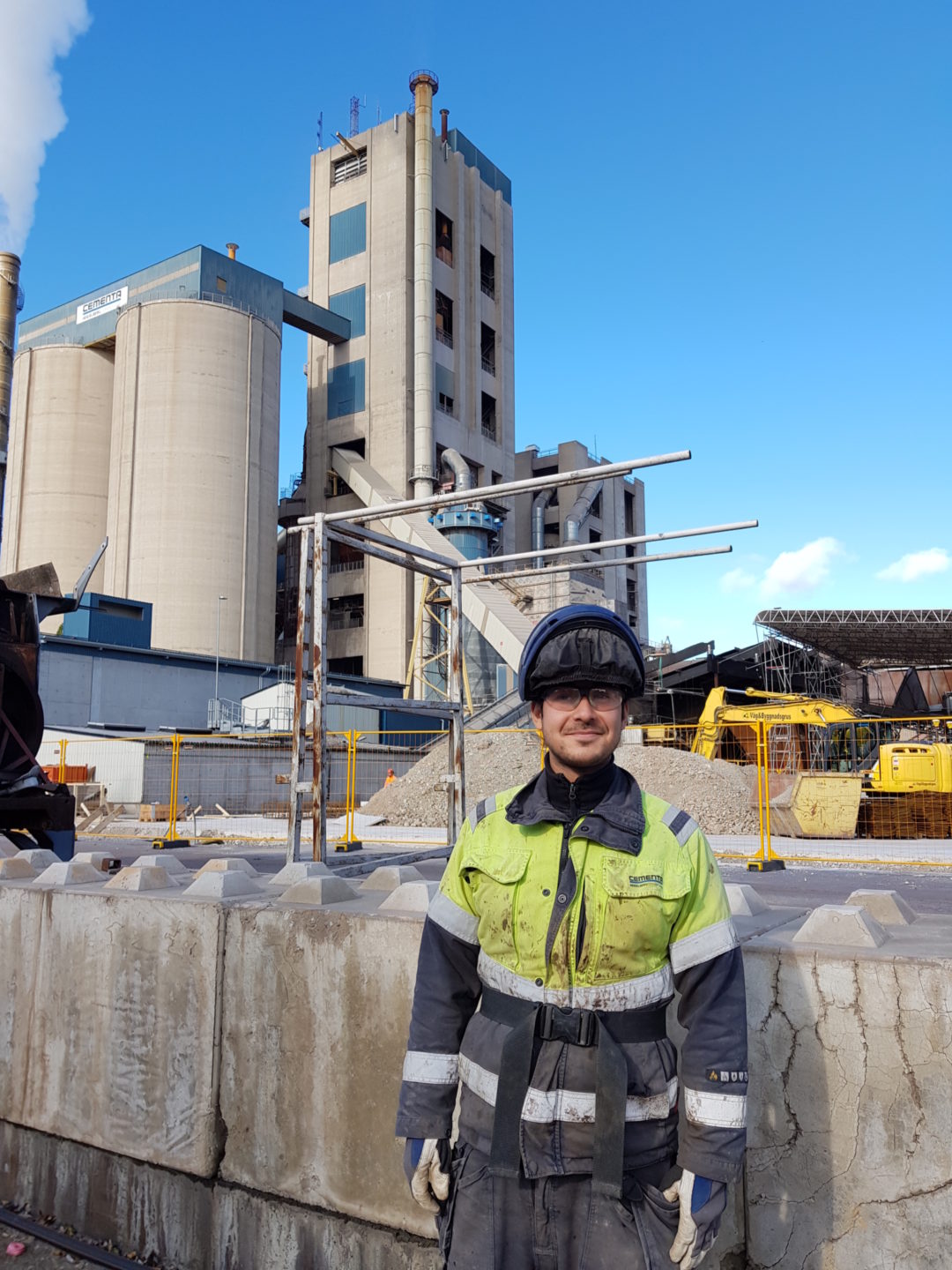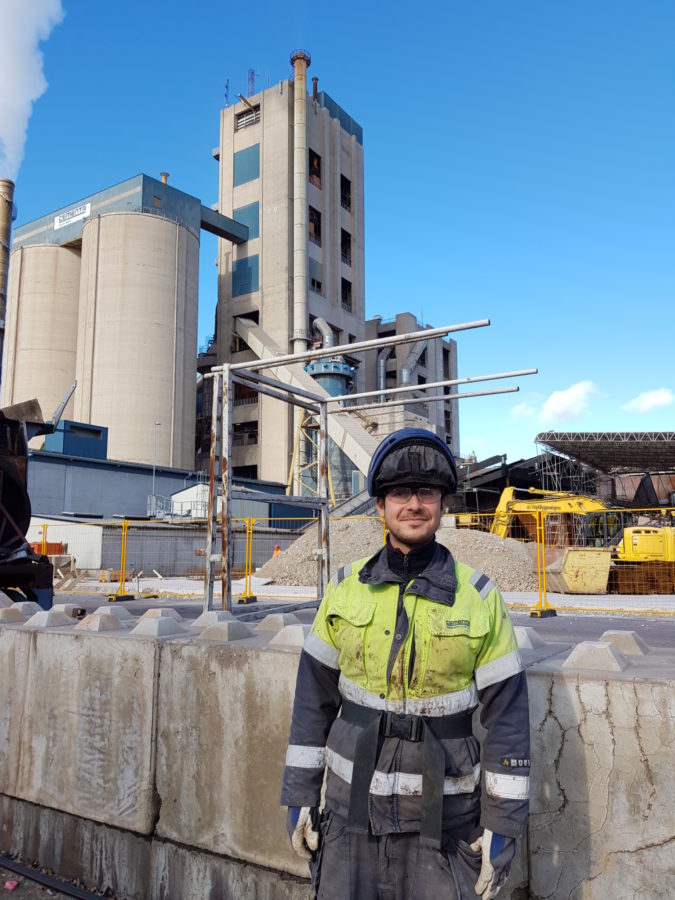
Developing the process of the production of sorbent at Cementa AB
Christian Roman is a master’s student studying environmental science at Stockholm University. He has worked with Cementa AB for the last 6 months and shares his experiences on working with the sorbent used in SEABASED pilots.
From by-product to sorbent
During last summer I was working at Cementa AB with designing the production process and producing 30 tons of a sorbent for one of the SEABASED pilots. The aim of the specific pilot is to bind phosphorous to the sediment in phosphorous rich areas. The sorbent has shown a lot of promise in this regard. If successful this could limit the internal nutrients cycling in the Baltic which is amplifying the current eutrophication issues. Also, the marl (a less pure muddy limestone) used to produce the sorbent is currently a rest product from the limestone industry that could be better utilized if it proves to be as efficient as previous studies have shown.

Christian Roman shares his experiences in working with the sorbent used in SEABASED pilots. Photo: Jenni Blomqvist
The kiln was too hot to handle
So how does one actually design a production process and what does the work entail? Well, firstly some of my colleagues constructed the kiln, which is a miniature rotary kiln and basically the centerpiece of the process, and then I started building from there. The next steps were to construct a system to feed material into the kiln, find a way to collect the product and work out how to transport it from the facility for packing. Finally, after the whole system was working and had been calibrated to produce the sorbent with the properties that we wanted, we could start production.
Since then, it has been constant challenge of adaptation. Sometimes the material would be too wet and the feeding system had to be changed to work and other days the oven just did not get hot quick enough the flow needed to be adjusted to keep the quality of the product high. The environment in the facility also posed some issues. The kiln becomes extremely hot and even the air around it reaches about 70 °C which combined with the large amounts of dust in the air required me to wear different kinds of heat resistant work-wear, an air respirator and to stock up on a lot of water as it was easy to become pretty dehydrated.
An interesting learning experience comes to an end
As of writing this, my project and the 30 tons of sorbent are almost finished. What first seemed like a huge task for a student straight from university has slowly but surely worked out and has been an interesting learning experience. Hopefully the product will live up to its potential and we can make the Baltic a little healthier, I eagerly await the results!


